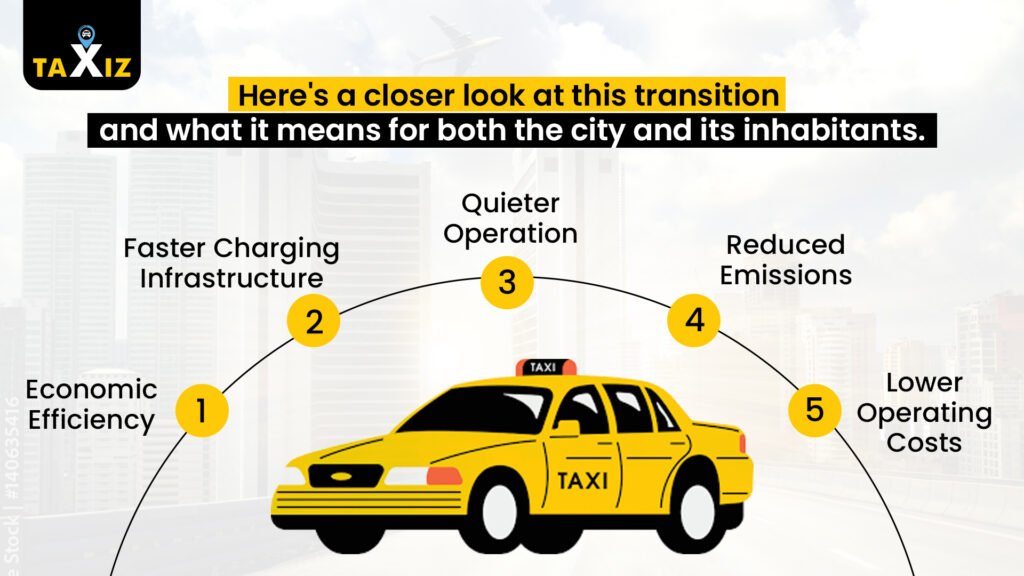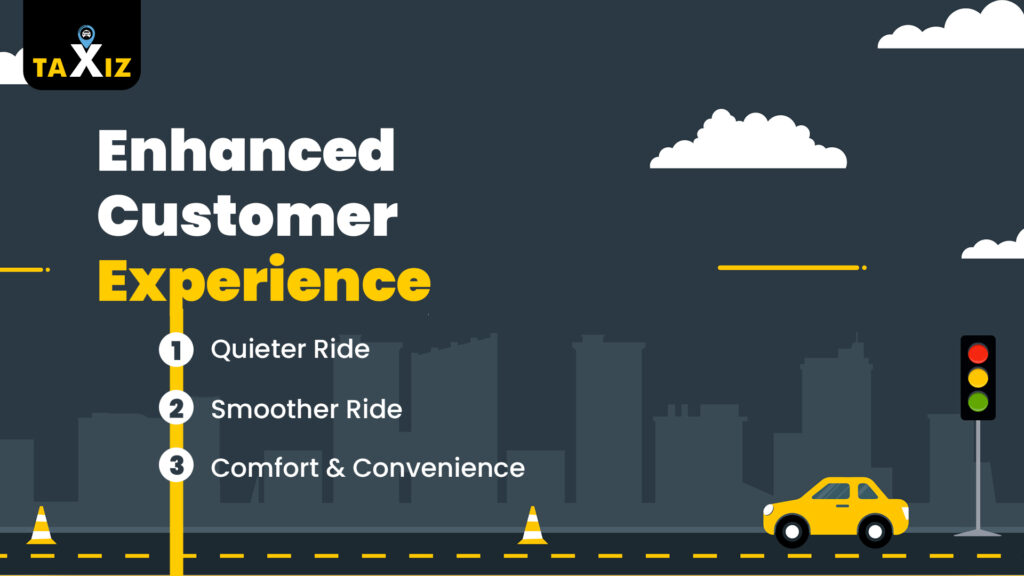Delhi’s air quality has been a major concern for years. At TAXIz, we believe a significant change can be made by transitioning from traditional fuel-based taxis to electric vehicles (EVs). We’ve embraced the EV revolution and are proud to offer a fleet of modern, zero-emission electric cabs. As environmental concerns become increasingly urgent. The taxi service sector in Delhi is no exception. This shift towards sustainability is not only a response to the global climate crisis but also a step towards a cleaner, healthier, and more efficient urban transportation system.
Why the Shift to Electric?
Delhi, known for its vibrant culture and bustling streets, also faces severe air pollution issues. Traditional fuel-powered taxis are a major contributor to this problem, emitting high levels of carbon dioxide and other pollutants. By transitioning to electric taxis, TAXIz aims to reduce these emissions, thereby contributing to a cleaner and healthier urban environment.
Here’s a closer look at this transition and what it means for both the city and its inhabitants.

1. Reduced Emissions: Electric taxis produce zero tailpipe emissions, making them significantly cleaner and environmentally friendly compared to their fuel-based counterparts. This not only improves air quality but also contributes to combating climate change.
2. Lower Operating Costs: Electric taxis have lower operation and maintenance costs compared to fuel-based vehicles. With the absence of engine maintenance costs and reduced fuel expenses, operators can reduce costs and improve profitability.
3. Quieter Operation: Electric taxis operate silently, reducing noise pollution in urban areas. This can be particularly beneficial for cities like Delhi, where noise pollution has become a significant concern.
4. Faster Charging Infrastructure: As the number of electric taxis increases in Delhi, there will be a gradual need for faster charging infrastructure. This will not only support the growth of electric taxis but also encourage the adoption of electric vehicles by other segments of the city’s transportation system.
5. Economic Efficiency: While the initial investment in electric vehicles (EVs) can be higher, the long-term savings on fuel and maintenance make them more cost-effective. Electric taxis have fewer moving parts, which means less wear and tear and lower maintenance costs.
Customer Expectations

Enhanced Customer Experience: Electric vehicles offer a quieter and smoother ride compared to conventional vehicles. This enhances the overall customer experience, providing a more comfortable and enjoyable journey for passengers.
- Quieter Ride – One of the main advantages of electric vehicles is the reduction in noise pollution. Traditional internal combustion engines are known for their excessive noise, which can be both annoying and distracting. In contrast, electric vehicles produce virtually no noise during operation. This silent ride provides a serene and tranquil environment for passengers, allowing them to relax, read, or simply enjoy the scenery without any disruption
- Smoother Ride – In addition to being quieter, electric vehicles also offer a smoother ride compared to conventional vehicles. The lack of engine noise allows drivers to more precisely hear the road, making for a more controlled driving experience. The smooth ride can be attributed to the electric motor’s instant torque response, which provides instant acceleration and deceleration. This translates into a smoother and more stable ride, reducing vibrations and jolts that can be felt in conventional vehicles.
- Comfort and Convenience – The enhanced customer experience provided by electric vehicles extends beyond just the ride quality. Electric vehicles are equipped with advanced suspension systems, which further enhance the ride comfort. The smooth ride combined with the quietness creates a relaxing and enjoyable experience for passengers, especially during longer journeys. Additionally, electric vehicles often have comfortable seating with ergonomic features, providing additional comfort and convenience.
Conclusion
TAXIz’s transition from fuel to electric taxis marks a significant step towards a sustainable transportation system in Delhi. By reducing emissions and improving air quality, we are contributing to a healthier environment for all.
By embracing electric vehicles, we are not only contributing to a cleaner and healthier environment but also ensuring long-term economic efficiency for our drivers and fleet operators. The lower operating costs and enhanced customer satisfaction associated with electric taxis make them a smart choice for both business and pleasure.
Join us at TAXIz as we continue to innovate and lead Delhi NCR towards a greener, more sustainable future. Together, we can make a significant impact on the city’s air quality, reduce our carbon footprint, and create a better world for future generations.







